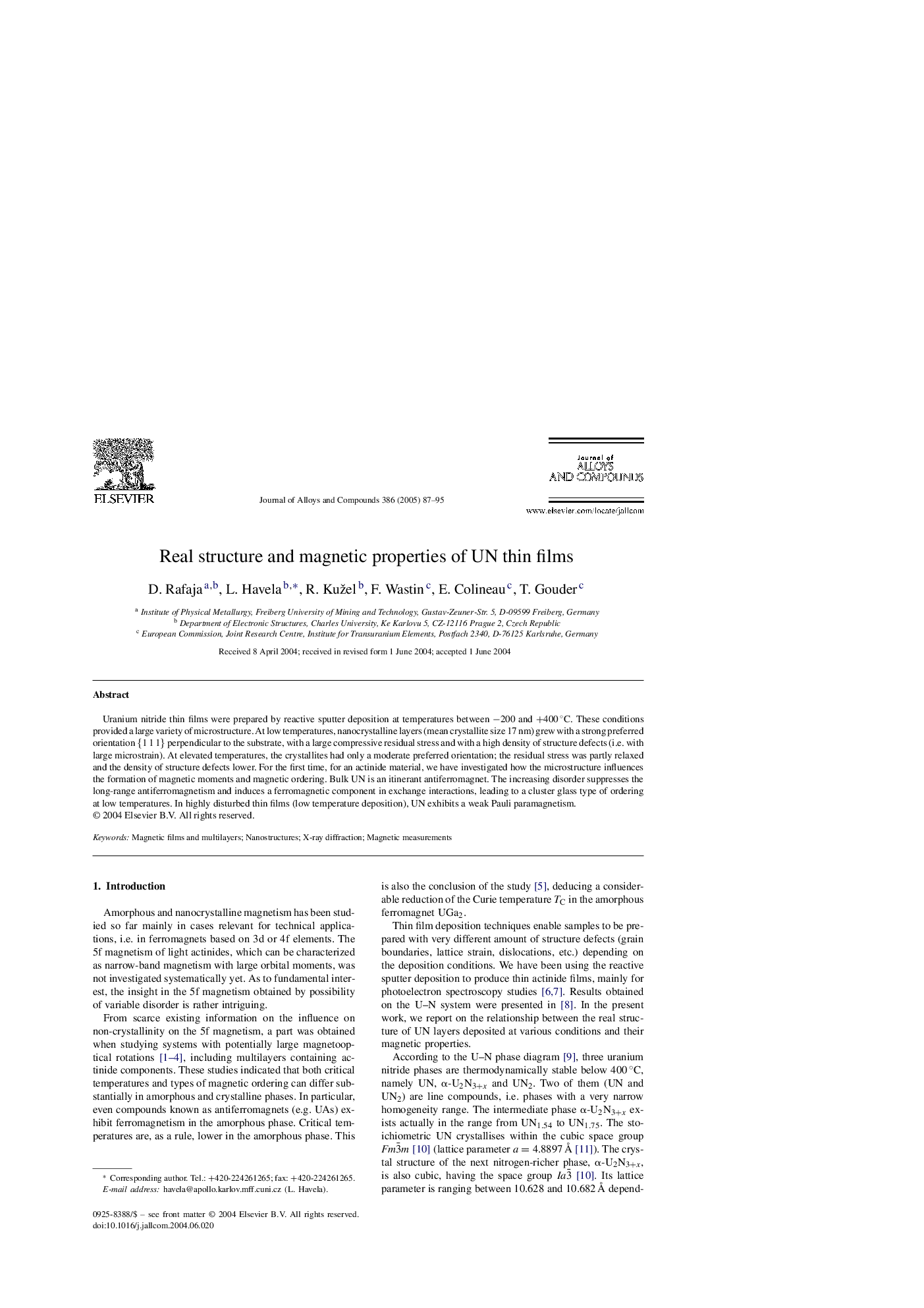| Article ID | Journal | Published Year | Pages | File Type |
|---|---|---|---|---|
| 9804206 | Journal of Alloys and Compounds | 2005 | 9 Pages |
Abstract
Uranium nitride thin films were prepared by reactive sputter deposition at temperatures between â200 and +400 °C. These conditions provided a large variety of microstructure. At low temperatures, nanocrystalline layers (mean crystallite size 17 nm) grew with a strong preferred orientation {1 1 1} perpendicular to the substrate, with a large compressive residual stress and with a high density of structure defects (i.e. with large microstrain). At elevated temperatures, the crystallites had only a moderate preferred orientation; the residual stress was partly relaxed and the density of structure defects lower. For the first time, for an actinide material, we have investigated how the microstructure influences the formation of magnetic moments and magnetic ordering. Bulk UN is an itinerant antiferromagnet. The increasing disorder suppresses the long-range antiferromagnetism and induces a ferromagnetic component in exchange interactions, leading to a cluster glass type of ordering at low temperatures. In highly disturbed thin films (low temperature deposition), UN exhibits a weak Pauli paramagnetism.
Related Topics
Physical Sciences and Engineering
Materials Science
Metals and Alloys
Authors
D. Rafaja, L. Havela, R. Kužel, F. Wastin, E. Colineau, T. Gouder,
